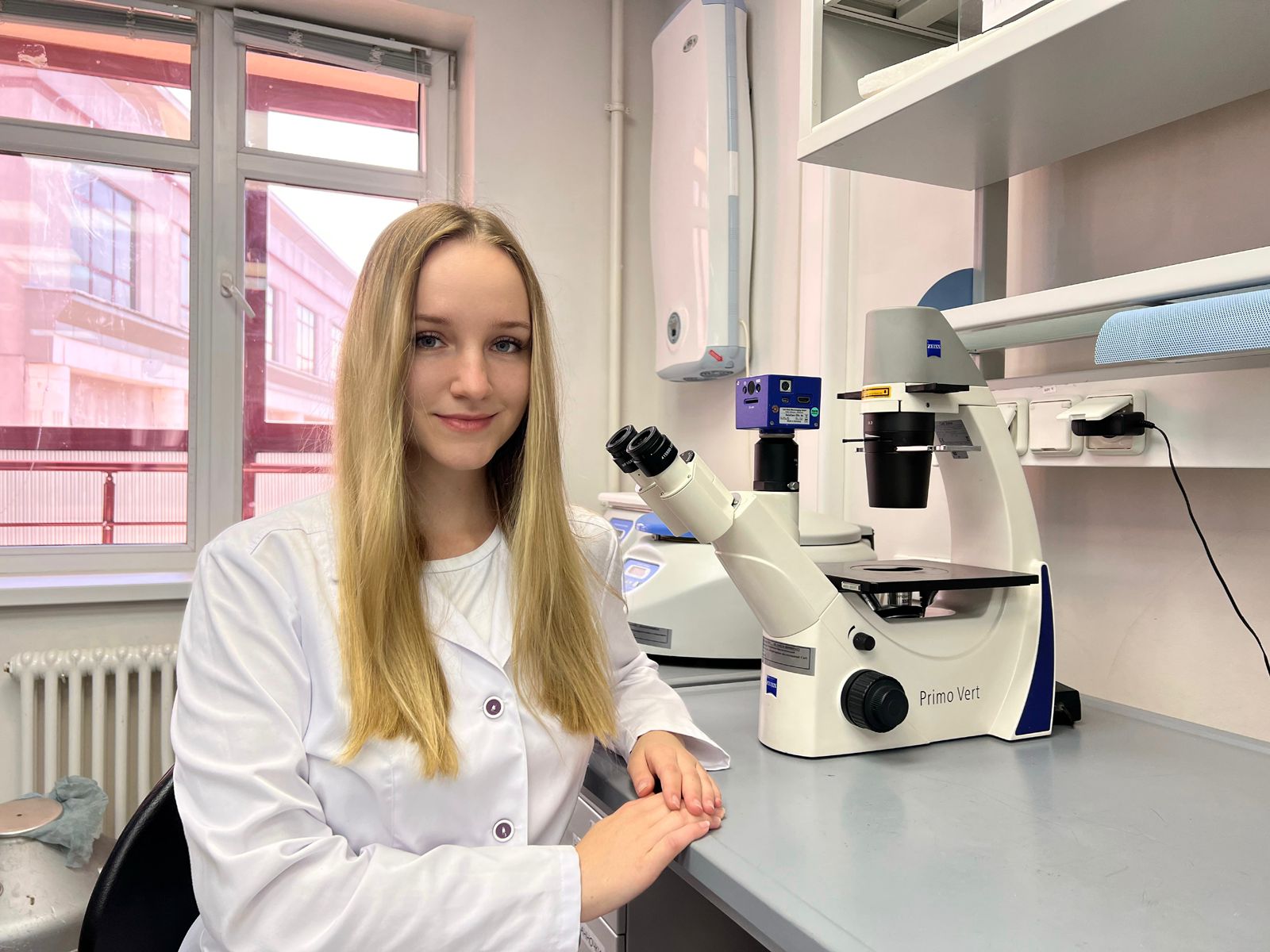Yelizaveta Plotnikova to receive funding for research in ischemia-reperfusion therapy in nervous tissue

The project Creation of a gene preparation for preventive and pathological therapy of ischemia-reperfusion in nervous tissue by Yelizaveta Plotnikova, a bachelor’s degree graduate of the Institute of Fundamental Medicine and Biology, won the Student Startup competition.
The young woman presented a project in the Medicine and health-saving technologies category. According to her, the idea of creating such a gene preparation arose from the desire to solve a complex and urgent medical problem faced by many patients after surgical interventions on the vessels of the brain and spinal cord. Yelizaveta was assisted in the preparation for the project by Tatiana Ageeva, Senior Research Associate of the Laboratory of Gene and Cell Technologies.
“My scientific supervisor is my mentor, she supported me, her belief in my abilities and the project inspired me to work hard,” admitted Plotnikova.
Ischemia-reperfusion syndrome occurs when there is a temporary interruption of blood supply (ischemia) and subsequent restoration of blood flow (reperfusion) in the affected tissue. This condition is common during various surgical interventions on the blood vessels of the brain and spinal cord.
“The cause may be such procedures as thrombolysis for ischemic stroke, removal of arterial blockages, treatment of vascular aneurysms, hydrocephalus, subarachnoid hemorrhage and carotid artery stenosis. The minimum duration of ischemia, after which a pronounced reperfusion syndrome develops, is 40 minutes, while the average duration of surgery is from 3 to 5 hours,” explained Plotnikova.
In ischemia, there is a decrease in blood supply to tissues, which leads to a lack of oxygen and nutrients necessary for the normal functioning of cells.
“Restoration of blood flow, or reperfusion, triggers a cascade of reactions that can be even more damaging than ischemia itself. These reactions include cell membrane damage, inflammation, oxidative stress, and microcirculatory disturbances. Paradoxically, the consequences of restoring blood flow often outweigh the severity of the original ischemic event,” she continued.
Explaining the relevance of her project, Plotnikova emphasized that currently there is no universally accepted and highly effective drug that can prevent or minimize the pathological consequences of the syndrome. Today, antioxidant drugs are used to prevent and treat ischemia-reperfusion, the weakness of which is insufficiently confirmed data on the effect of drugs on the syndrome. Nelonemdase is the only drug that is currently undergoing phase 3 clinical trials in stroke therapy. Given the lack of reliable measures for the prevention and treatment of the syndrome in clinical practice, the development of a new agent for ischemia-reperfusion therapy is highly desirable.
The gene product in question is a biomedical product based on adeno-associated virus of serotype 9. This virus is used as a vector to deliver therapeutic genes directly into target cells.
“A gene product based on adeno-associated virus serotype 9 will allow targeted delivery of therapeutic genes into nerve cells, reducing apoptosis and stimulating remyelination and angiogenesis, which significantly differentiates it from existing therapies. An important advantage of the selected viral vector is the lack of activation of the immune system, unable to be independently incorporated into the genome. Our drug will contain a bicistronic genetic construct encoding insulin-like growth factor-1 and multineutrophin NT-3-BDNF with reduced affinity for p75NTR. The chosen combination of genes will provide a multifaceted therapeutic effect,” said Plotnikova about the principle of action of the drug.
According to the young scientist, genetic engineering technologies, vector technologies, and transduction methods will be used to create the drug.
“This opens prospects for significant improvement of treatment outcomes in neurosurgery and neurology, as well as provides a powerful tool for medical institutions specializing in these areas,” believes Yelizaveta.

